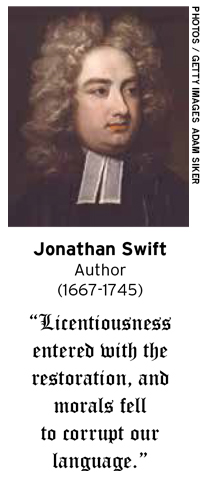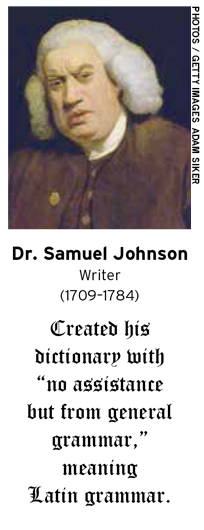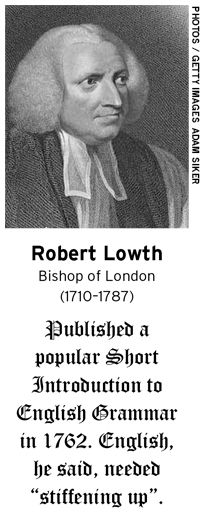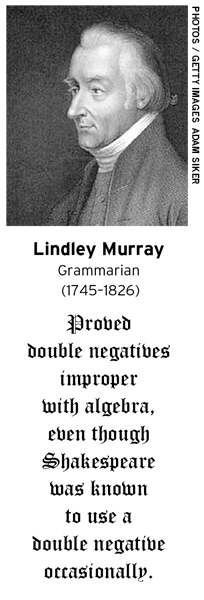Six teenage boys wearing sweats huddle around a few chairs and desks. Fluorescent lights expose freckles, facial stubble, or no stubble at all. A tall boy named Mike leans over his desk and tells the others, “This guy was, like, on crack or something.”
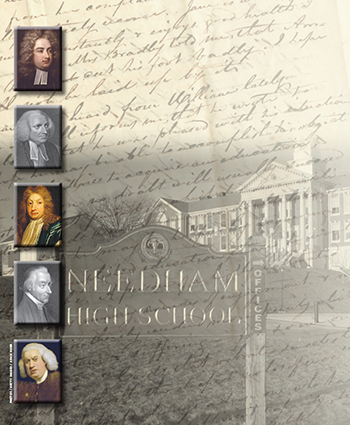 “No,” says a boy named Max in a black rock band T-shirt. “He was on PCP.”
“No,” says a boy named Max in a black rock band T-shirt. “He was on PCP.”
A few nod their heads in agreement. They could be talking about a sophomore who got wasted over the weekend or a senior who got busted in the parking lot, by all appearances, but they’re actually discussing the president of a road-racing company, a man whose crimes had nothing to do with illegal substances. He earned the attention of these students through a poorly written letter, one that caught the eye of Ms. Andrea Bassett, an Honors English teacher at Needham High School in Massachusetts.
Max reads a printout of the letter to the other boys as if he were dropping meat into a shark tank. “‘In trying to formulate what to say in regards to yesterday’s events,’” Max quotes, “‘I realized that what I said over and over to the folks I helped get on returning shuttle buses was exactly what should be said to all.’”
“What?” someone exclaims. Everyone laughs. “He just throws in words!” Max says. He goes on to finish the opening paragraph.
“‘While it became repetitive, it was no less from the heart in any one time from the other:’”
“He ended with a colon,” says a boy who didn’t shave that morning.
“You can pretty much revise the first paragraph,” says Mike, his cheek on his hand.
A stocky kid named David chimes in. “That’s not just bad grammar,” he says, indignant. “That’s, like, bad PR.”
His comment catches the attention of Ms. Bassett, who is making rounds to each cluster of students. “David,” she says, “the life lesson here is that bad grammar is bad PR. You guys remember that.”
Ms. Bassett is the newest faculty member of the English department at Needham High, a lean, athletic blonde who chose to show this letter to her students as a good bad example. It was an apology for a poorly managed 15K, a race that Ms. Bassett herself ran, averaging a 10-minute mile. In the letter, the president of the road-racing company tried to explain how the runners had gotten misdirected and why there was no water at the finish line. Ms. Bassett thought the greater indignity was enduring an apology from a president whose prose waddled along for 40 paragraphs, weighed down with extra words and never-ending sentences.
“He would definitely fail a grammar assignment in this class,” she says, to wide classroom approval. Ms. Bassett is part of a department that has decided to take grammar seriously. Too many students were claiming that nobody had ever taught them the rules. Needham High School’s seniors, mostly from upper-middle-class families, were graduating without knowing the parts of speech or parts of a sentence. They would sometimes write “u” instead of “you” in their essays, or a lowercase “i” instead of “I.” The high school, like many others, had been suffering from a lack of standardized grammar instruction throughout the grades. Over the summer of 2011, the English department created a series of PowerPoint presentations to coordinate grammar instruction across the grades, hoping to provide their students a better, more uniform understanding of the rules. The goal was to set a baseline for Needham High students, allowing them to review old lessons and master new ones through the slides.
“They actually like it. They like something in front of them that’s task-oriented,” says Ms. Bassett. The PowerPoint slides look like blueprints, with their simple, white-on-blue form, and they lay the rules out in a straightforward way. Needham High’s teachers have been using them for more than a year, and Ms. Bassett believes that they have made a subject that was once confusing “concrete and quantifiable.”
Battling Barbarism
Sloppy English usage may seem like a modern problem, but the laxness that has led to this moment in grammar’s history bears a strong resemblance to the atmosphere in early-18thcentury England. At that time, decades had passed since the golden age of English, with its production of the King James Bible (1611) and the plays of William Shakespeare (1564–1616). Many began to fear that the language was going to the dogs.
“Our language is in a manner barbarous,” poet John Dryden complained in 1693. Theologian Thomas Stackhouse agreed. “We write by guess, more than any stated rule,” he said in 1731, “and form every man his diction, either according to his humour and caprice.”
Dryden and Stackhouse weren’t complaining about rule breakers, as Needham’s teachers do; they were complaining about a lack of rules in the first place. In the early 1700s, no English-specific grammar or dictionary existed. Writers worried that in a few generations their work would become as unintelligible as Old or Middle English was to them. As Jonathan Swift, author of Gulliver’s Travels, put it in 1711, “Such as Chaucer is, shall Dryden be.”
Much of the concern sprang from the English Civil War (1642–1651). The overthrow of the monarchy and the turmoil that followed had dirtied the image of English, a green, unsure language at the time. With Oliver Cromwell leading the country and the king himself beheaded, the King’s English was in jeopardy. An expansion of printing during the war had allowed writers of less means to publish material. “Such an infusion of enthusiastic jargon prevailed in every writing, as was not shaken off in many years after,” said Swift. “To this succeeded the licentiousness which entered with the restoration, and from infecting our religion and morals fell to corrupt our language.” Religion, morals, language—they had all grown shoddy by the 1700s, many thought. The English language needed help. Fast.
Generation Gap
In the English department lounge at NHS, teachers sit at a long table, sipping on water bottles and pulling out home-packed lunches. They too believe that English needs help, and they want to fix it. Jonathan Cooke thinks the decline of grammar is a recent one. The only person with gray hair in the room, he’s a former lawyer who switched to teaching 15 years ago. He remembers a time in the early 1970s when virtually every student could identify a direct object. “I learned that all through middle school,” he says. “By the time I got to high school, it was more funky. You could take a course in just satires.”
Brent Concilio, a young, Dartmouth-educated teacher with a turkey wrap in his hand, thinks the shift in the 1960s came from the ideas of John Dewey (1859–1952), a reformer who pushed for a child-centered education. “In the interest of making English class more ‘relevant’ to students’ lives, we began having students read contemporary novels and talk about how those novels made them feel.”
“Wicked cool,” says Cooke.
“But any time you make room for something, something else has to go,” says Concilio. “And what went was the systematic teaching of grammar.”
This shift in priorities was only one of the factors in the abandonment of grammar instruction. Another factor was a public campaign against the concept of a single correct way of speaking.
The Conference on College Composition and Communication in 1972 stated that students had a right “to their own patterns and varieties and language.” The resolution, which was adopted in 1974 by the National Council of Teachers of English (NCTE), went so far as to say that correcting language was “immoral” because it was really an attempt by one social group to exert dominance over another. Suddenly, grammar was oppressive. It was stodgy. It was all but banished from many classrooms. The pendulum swung far away from the prescriptive, rules-oriented English once taught in schools.
After the sixties, grade-school students, by and large, didn’t learn grammar the way their parents had, and now, decades later, they don’t reinforce the rules very well with their own children. Without this reinforcement at home, much of the burden to teach students correct English lies with teachers.
The problem with that idea, of course, is that many teachers today didn’t learn much grammar when they were in school, either. “It’s now been gone for a generation,” Concilio says. “A lot of people, I think, really don’t understand the value of it.”
Rules of Order
The pushback we have seen over the past few decades could have been less severe if the architects of English grammar had set up the rules to be more respectful of actual usage. The early grammarians were reacting to disorder, though, and they weren’t afraid to leave a few people behind in their drive for structure.
One of the first of the language reformers was the writer Dr. Samuel Johnson. In 1755, he published A Dictionary of the English Language, a mammoth work of scholarship that he spent nine years writing. The dictionary was a tremendous step toward preserving the language, but Johnson complained that he had to create it with “no assistance but from general grammar,” meaning Latin grammar, because nobody had systematized the English language yet.
The call for a unique English grammar grew louder. It was the greatest void in the language, now that a dictionary had been written. Eighteenth-century scholars and politicians believed that such a grammar would dignify the language on the world stage, helping to emphasize England’s political autonomy from the European continent.
Writers were begging for standards not only for their own guidance, but for their legacies.
Robert Lowth stepped up to the challenge. Lowth, a clergyman and eventual bishop of London, believed that correct grammar was next to godliness, and that the King James Bible was the gold standard of the language. English, he said, was becoming far too loose, and it needed “stiffening up,” a claim that would resonate several centuries later with Needham High School’s English teachers.
Lowth’s Short Introduction to English Grammar, published in 1762, was not the first English grammar ever written, but it outsold all the others on the market. The most notable of the competing guides was a descriptive grammar by theologian and chemist Joseph Priestley (1733– 1804). Robert Lowth’s grammar proved more popular because Britain in the 18th century, still recovering from the English Civil War, wanted prescription, not description; rules, not the reality—especially not the reality of the lower classes.
The only problem was that “stiffening up” the language left English a bit too stiff. Lowth often looked to Latin for inspiration rather than to customary usage when he settled a question. For example, he frowned on the expression “It is me” because it ended in the objective case. “It is I” matched the Latin construction, and was therefore better, according to Lowth. It has remained the rule for proper usage ever since, but has always been too awkward to gain traction among most English speakers.
Lowth also disapproved of prepositions at the end of sentences. “The placing of the preposition before the relative is more graceful,” he said. The rule worked for Latin, but not so well for English speakers, whose sentences ended naturally in prepositions. Lowth at least acknowledged that this tendency was “an idiom which our language is strongly inclined to,” showing that the inclination bent strongly in his direction, too.
He called double negatives improper, and grammarian Lindley Murray (1745–1826) later proved this claim with algebra, even though Shakespeare was known to use a double negative occasionally. Lowth also preached against verbs that had merged tenses over the years. He preferred strong verbs that had a distinct past tense: drink and drank, write and wrote, for example. Verbs whose past tenses merely ended in “ed” were the result of a natural streamlining of the English language. Lowth wanted to fight against this tendency and supported usage that kept verb tenses distinct and intact, like Latin verbs, which were in no danger of merging because the language had been dead for centuries.
Lowth’s ideas pleased the class conscious because his rules were too pedantic for the lower classes to adopt. They allowed social climbers a clever way to blend in with the upper class. They fit the zeitgeist because 18th-century England, with its zeal for classical ideals of logic and reasoning, was fertile ground for anyone who wanted to explain something rationally, even something as irrational as the English language.
A Short Introduction to the English Language ran 22 editions in the 18th century and led several decades later to an important spin-off grammar by Murray, which became a staple in 19th-century schools on both sides of the Atlantic. What began as one man’s guidelines eventually became hard rules, enforceable with a switch. Even when Americans began producing their own textbooks, in the mid-19th century, they rehashed most of Lowth’s and Murray’s ideas.
To be sure, Lowth and his fellow reformers stabilized the language, but their prescriptive, top-down approach also set the stage for the instability we have now. The gap between proper written English and actual usage is wider today than Needham High School’s football field.
Today’s Torchbearers
Grammar instruction has been mocked and marginalized for decades, partly because the rules were too cold and unfeeling. Lately, the rules have been making a bit of a comeback. Educators are starting to believe that English grammar, even with its quirky rules, is far better than nothing, after they’ve seen the results of nothing. The SAT added grammar questions to its format in 2005 in response to pressure from college administrators. Parents have begun to push for more English language instruction. The NCTE has softened its position, and now we see a growing number of teachers bringing grammar, the forgotten spinster of school subjects, back to the party.
“In the work force, grammar will be as important as this training of analyzing literature,” says Ms. Bassett. “[These students] are not going to be paid in 20 years for analyzing literature.
They’re going to be paid to present something to their company.”
Her colleagues list several benefits that come from grammar instruction: clear cover letters, stronger writing skills, and an easier understanding of a foreign language, to name a few. If there is a bias toward one “correct” way of speaking, well, they want their students to learn it.
And so the legacy of the English language lies heavily with teachers like Ms. Bassett, a recent convert to grammar herself, and her students. They may go too far in their reforms, as their predecessors have, or they may achieve a balanced approach. At any rate, the appearance of today’s grammarians, in their hoodies and sneaks, bears little resemblance to that of their forerunners.
A boy named Leo, in a Red Sox cap, raises his hand to make a suggestion in Ms. Bassett’s class. “You could put an em dash here: ‘Our race director quickly came up with a contingency plan—real time, on the spot—in the horror of what could have been a disaster.’”
“Oh, my gosh, you are an em-dash king. Nicely done,” says Ms. Bassett.
David raises his hand. “This is the dumbest thing,” he says, pointing to a paragraph in the memo: “‘Finally, we start the race. What happens next defies belief, absolutely and completely!!!’ Like, why are there three exclamation points?”
“What sort of tone does it create to use three exclamation points?” asks Ms. Bassett.
“Colloquial,” a few answer back.
“Yeah,” she says. “Third grade. Like a tween looking at Justin Bieber.”
At the end of the hour, as Max, Mike, and David put their pens away and zip up their bags, Ms. Bassett warns her students that there are consequences to becoming successful and writing with poor grammar: “You’ll get ridiculed in my class.”
And in a society that has neglected grammar for so long, mockery may be just what grammar needs to come back into vogue. Only now, the ridicule is coming from the bottom up, from 17-year-olds who specialize in snark, who know the rules better than their future bosses, who write clean sentences but don’t appear very close to godliness. They may be Robert Lowth’s best hope.
Elise Hahl contributed to Choosing Motherhood (Cedar Fort, Inc., 2013) and has written for the online magazine “Outside In Literary & Travel.”
This article appeared in the Spring 2013 issue of Education Next. Suggested citation format:
Hahl, E. (2013). Grammarians in Hoodies: High school students take up the charge. Education Next, 13(2), 36-40.



